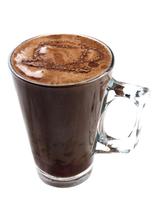The origin of coffee is exported to Yemeni coffee.
The world's first coffee tree was found in the Horn of Africa. Coffee cultivation began in the 15th century. For hundreds of years, Yemen in the Arabian Peninsula is the only coffee producer in the world, and the market demand for coffee is very strong. In the Yemeni port of Moka, when coffee is shipped out, it often needs to be protected by heavy troops. At the same time, Yemen has also taken various measures to prevent coffee saplings from being taken out of the country. Despite many restrictions, Muslims who made a pilgrimage to the holy city of Mecca secretly brought coffee saplings back to their hometown, so coffee soon took root in India. At that time, in Venice, Italy, countless merchant ships traded perfumes, tea and textiles with Arab merchants. In this way, coffee spread to a wide area of Europe through Venice. Many European businessmen have become accustomed to drinking coffee. Later, small vendors peddling coffee appeared on the streets of many European cities, and coffee gained rapid popularity in Europe. In the 17th century, the Dutch introduced coffee to their colony of Indonesia. At the same time, the French began to grow coffee in Africa. Today, coffee has become the second largest trading product on the earth after oil! Among the countless legends of coffee discoveries, there are two legends that people are most interested in talking about, namely, the Story of the Shepherd and the Arab Monk.
Three major coffee growing areas in the world: Africa, Indonesia and Central and South America. Yemen is the first country in the world to produce coffee on a large scale as a crop. The mocha coffee in Yemen today is grown and processed in much the same way as it was hundreds of years ago. On most coffee farms in Yemen, coffee farmers still resist the use of artificial chemicals such as chemical fertilizers. Coffee farmers plant poplars to provide shade for coffee to grow. Coffee trees are planted on steep terraces to maximize the use of less rainfall and limited land resources. Yemeni mocha beans are still shipped in a bag made of straw, unlike chemical woven bags in other places.
Yemeni coffee has been cultivated for more than 2000 years. According to statistics, coffee is cultivated in 76 countries in the world. Coffee in China was first introduced to Taiwan in 1884. In 1908, overseas Chinese brought back large and medium seeds from Malaysia to Hainan Island. At present, the main cultivation areas are Yunnan, Guangxi, Guangdong and Hainan.

Important Notice :
前街咖啡 FrontStreet Coffee has moved to new addredd:
FrontStreet Coffee Address: 315,Donghua East Road,GuangZhou
Tel:020 38364473
- Prev

Development status of Mocha Coffee in Yemen
(1) the total output has continued to decline in recent years since 2001, and Yemeni coffee production has declined year by year due to various reasons. The annual output has dropped from 11906 tons in 2001 to 11608 tons in 2003, 11590 tons in 2004, to about 11000 tons in 2008. In recent years, despite the rising prices in the international coffee market, the coffee industry in Yemen has not boomed with it, but sharply.
- Next

Processed taste of Sumatran coffee
Location: Sumatra is one of the largest islands in Indonesia, an island country in Southeast Asia made up of thousands of islands along the equator from Malaysia to Papua New Guinea. Similar to coffee: Sulawesi coffee and Xianglong mixed coffee. Taste with food: cinnamon, oatmeal, maple sugar, butter, toffee, cheese. Products
Related
- Does Rose Summer choose Blue, Green or Red? Detailed explanation of Rose Summer Coffee plots and Classification in Panamanian Jade Manor
- What is the difference between the origin, producing area, processing plant, cooperative and manor of coffee beans?
- How fine does the espresso powder fit? how to grind the espresso?
- Sca coffee roasting degree color card coffee roasting degree 8 roasting color values what do you mean?
- The practice of lattes: how to make lattes at home
- Introduction to Indonesian Fine Coffee beans-- Java Coffee producing area of Indonesian Arabica Coffee
- How much will the flavor of light and medium roasted rose summer be expressed? What baking level is rose summer suitable for?
- Introduction to the characteristics of washing, sun-drying or wet-planing coffee commonly used in Mantenin, Indonesia
- Price characteristics of Arabica Coffee Bean Starbucks introduction to Manning Coffee Bean Taste producing area Variety Manor
- What is the authentic Yega flavor? What are the flavor characteristics of the really excellent Yejasuffi coffee beans?

